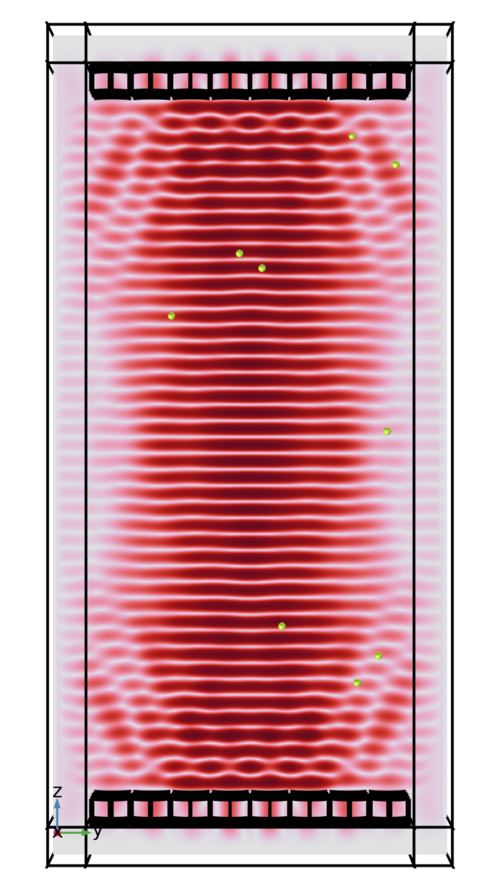The open source package CFDEMcoupling (DCS Computing) combines the capabilities of OpenFOAM for the representation of fluid flows using CFD and LIGGGHTS for the simulation of particle motion using DEM in order to analyse their interactions. The interaction forces can be determined on a volume-averaged basis using empirical equations (unresolved CFD-DEM coupling) or by direct calculation using a fine computational grid (resolved CFD-DEM). The software can be used, for example, to investigate the behaviour of particles in suspensions (e.g. during dispersion) or in air (e.g. particle trajectories during the launch of a rocket).

COMSOL Multiphysics is a numerical simulation programme that can be used to solve coupled partial differential equations. It facilitates the mapping of complex physical processes from start to finish, including geometry creation, meshing, physical modelling, evaluation, and optimisation. Thanks to its modular structure, different physics interfaces can be flexibly combined to realistically describe problems involving multiple phenomena, such as fluids, solids, and coupled systems.
For example, the Acoustic Module and the Discrete Element Method (DEM) Module can be used to analyse interactions between acoustic fields and particle systems. The Acoustic Module models the propagation of pressure and sound waves in fluids and solids based on the relevant wave equations. The DEM describes the motion of particles by solving the translational and rotational equations of motion of individual particles while taking contact, collision and friction forces into account. Using suitable coupling approaches, it is possible to record the influence of particle distribution on the local acoustic field, as well as the forces acting on the particles due to acoustic phenomena (e.g. sound radiation pressure or pressure gradient forces). At iPAT, both modules are used for the ultrasonic levitation of particles.
LIGGGHTS (LAMMPS Improved for General Granular and Granular Heat Transfer Simulations, DCS Computing) is an open-source software code for simulating the behaviour of individual particles and bulk solids. It uses the discrete element method, which makes it possible to predict the movement of the particles using force models. A coupling to computational fluid dynamics (CFD) is often used to take into account the interaction with the surrounding fluid. At iPAT, LIGGGHTS is used for the representation of tableting, agglomeration, the flow behaviour of powders and comminution technology, among other things.
OpenFOAM (Open Source Field Operation and Manipulation) is an open source software package for performing computational fluid dynamics (CFD). The finite volume method (FVM) is used in this case. At iPAT, this is usually done in combination with the Discrete Element Method (DEM) as part of CFD-DEM coupling. This allows complex, multiphase phenomena to be analysed in areas such as spray drying, dispersion, agglomeration and emissions.
Ansys Rocky is an advanced simulation software based on the Discrete Element Method (DEM), specifically designed for the numerical analysis of complex particulate processes. It enables precise simulations of particle systems, including realistic modeling of particle shapes and their interactions. At iPAT we utilize Ansys Rocky to numerically investigate particle flow behavior, particle breakage, and particle-fluid-structure interactions. Additionally, the software allows realistic representation of complex particle geometries and supports coupling with Computational Fluid Dynamics (CFD), structural mechanics (FEM), and thermal processes.